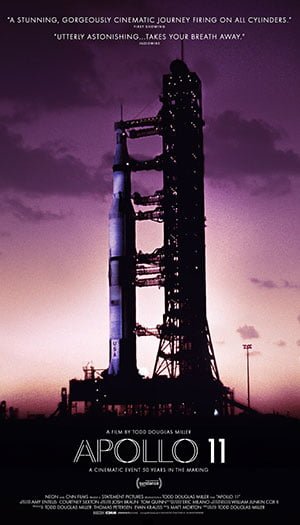 It was the height of the Cold War and every time the United States tried to pull ahead in space, the Russians got there first. Americans were afraid, and Sputnik was to blame. Sputnik, the first orbiting satellite, meant that the Russians could spy on America and there wasn’t a darn thing the USA could do about it. We raced to get an American in orbit but the USSR beat us there too when cosmonaut Yuri Gagarin became the first man to orbit the Earth.
It was the height of the Cold War and every time the United States tried to pull ahead in space, the Russians got there first. Americans were afraid, and Sputnik was to blame. Sputnik, the first orbiting satellite, meant that the Russians could spy on America and there wasn’t a darn thing the USA could do about it. We raced to get an American in orbit but the USSR beat us there too when cosmonaut Yuri Gagarin became the first man to orbit the Earth.
It’s no wonder that in May 1961 President John F. Kennedy threw down the gauntlet. His challenge: for an American to be the first man to step foot on the moon. “We choose to go to the moon in this decade and do some other things, not because they are easy, but because they are hard, because that goal will serve to organize and measure the best of our energies and skills, because that challenge is one that we are willing to accept, one we are unwilling to postpone, and one which we intend to win.”
With this one electrifying speech, JFK pushed us into a race to the moon, and it would take almost a decade for the Apollo project to invent, evolve and perfect all the many technologies and systems required to not just get men to the moon, but bring them back safely. That most historic of all space missions was Apollo 11, with Neil Armstrong and Buzz Aldrin in the lunar module and Mike Collins in the orbiter flying about 75 miles above the lunar surface.
The fantastic new documentary “Apollo 11” offers a compelling and engaging narrative of this mission, from pre-takeoff glitches on the launch pad through each of the many phases of the launch and flight to the moon, to lunar landing, docking, return flight to the Earth and final splashdown. Assembled exclusively of historic footage, it also offers a deeper picture of not just the three men in the spotlight but the hundreds and hundreds of men and women behind the scenes who built the rockets, the suits, the cameras, the test equipment, and who manned the launch facility, the control rooms in Florida and Texas and monitoring stations around the world.
Too often portrayed in cinema as the simple, straightforward accomplishment of a few dozen engineers, the Apollo mission was in fact exactly what Kennedy had demanded, a “measure of the best of our energies and skills”. And it had a lot of moving parts managed by thousands of people, something that is abundantly clear in the extensive Apollo 11 ground footage in the film.
I consider myself knowledgeable about the Apollo missions, but there was still a lot in the film that astonished me, notably including a slow pan of the row upon row upon row of massive computers and men staring intensely at computer screens in Mission Control at key moments in the flight. The view from the staging booster of the Columbia heading off towards the moon, the long panoramas of the estimated one million people lined up, eager to experience the launch, the split-screen of the lunar module docking with the Columbia and the splash-down are all spectacular footage.
While the film doesn’t go into any great depth about the astronauts themselves (two great films to check out if you seek more background info are First Man, about Neil Armstrong and The Right Stuff about the astronaut program) it does offer some revealing glimpses of how much calmer and cooler they were than us normal folk. During take-off, for example, two of the three astronauts didn’t even have elevated heart rates as the Saturn V literally exploded under them in its effort to break free of Earth gravity. Armstrong famously came within 45 seconds of running out of fuel during the lunar landing sequence, but his heart rate only briefly rose into the mid 150s before it quickly settled back down. By the time Neil transmitted “the Eagle has landed” he and Aldrin were as calm as if they were enjoying poolside beers back in Florida.
The technical achievement of “Apollo 11” is remarkable too. The production team digitally scanned hours and hours of historic footage from the National Archives to maximize resolution, then processed it all to prep for an IMAX print. Amazingly, while digging through NASA archival materials in the National Archives they found reels of 65mm film that had never been processed, let alone viewed or shared with the public. Some of the best footage in the film – including the suit-up room sequence and U.S.S. Hornet recovery ship at splashdown – are from this newly found footage.
I saw Apollo 11 on the big IMAX screen and it’s worth the extra few dollars for the giant view. The experience is absolutely visceral, with its smooth editing, tasteful (and occasionally anxiety building) additional music and original audio. Apollo 11 is a film about an amazing adventure and human accomplishment, and as such, it steps respectfully back and lets the people involved and the mission itself become the story. It’s fantastic, well worth seeing on a big screen, and when there’s a 4K Ultra HD release, I’ll be buying a copy for my own film library. Go see it. Better yet, take the kids. It’s inspiring.
![]()
